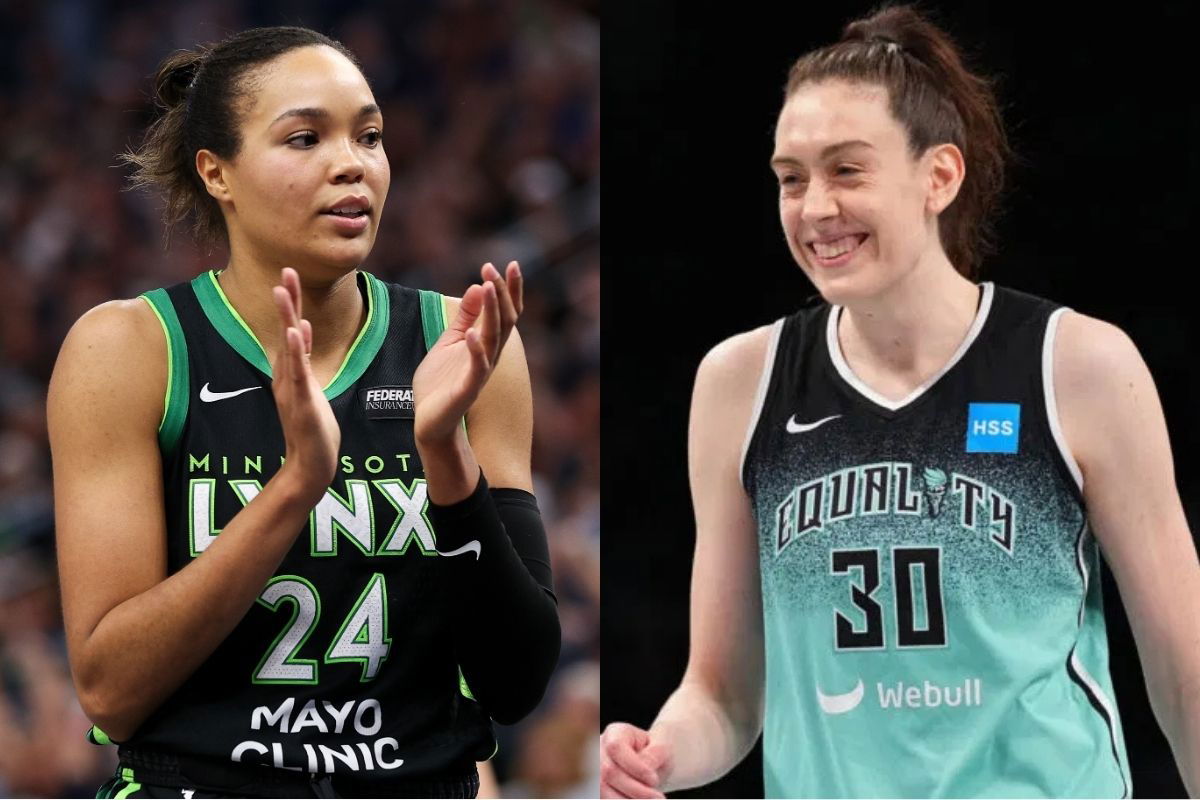
Imago
Credits – Imagn

Imago
Credits – Imagn
The clock is running out on CBA negotiations, with the current agreement expiring next week. But in the turn of events, complicating matters further is the involvement of Breanna Stewart and Napheesa Collier, WNBPA’s vice presidents and the co-founders of the offseason league Unrivaled. Although the 3×3 league debuted last season to strengthen the women’s basketball players who had to leave the country to earn overseas, it’s now being viewed as a potential threat to the WNBA’s interests.
Watch What’s Trending Now!
“They seem to want a structure that is similar to the NBA player structure, where they split the basketball-related income 50-50. But the WNBA structure is incredibly different,” ESPN’s Brian Windhorst said on Front Office Sports today. “Primarily, the owners of the WNBA only own 50% of the league, the other 50% is owned by private equity and the league itself. And so, therefore, the negotiations and the revenue sharing are more complicated. You also have something that the NBA doesn’t have, which is potential rival leagues.
ADVERTISEMENT
“You have Unrivaled, which is already operational, and you have the potential that other international leagues may start to rival the WNBA. Four generations WNBA players have been allowed to play in those leagues. And the fact that their contracts allow them to play in those leagues is a task to admission that they’re not paying the players enough. The reason they allow them to do it is that if they allow them the option to only play in one league, for many many years, those players will not play in the WNBA.”
With investors like Serena Ventures, Warner Bros. Discovery, and soccer legend Alex Morgan’s Trybe Ventures, as well as buy-ins from NBA players Trae Young and Franz Wagner, the league has made tremendous progress in just one year and is now planning to use this funding to expand its Miami venue.
They’ve also simultaneously paid the highest average salaries, $220,000, provided childcare, and a multiyear television deal with Turner. Moreover, with the players being the majority shareholders in Unrivaled, President Alex Bazzell has already clarified that they will reap the benefits of growing valuations.
ADVERTISEMENT
This is where Unrivaled just might become a direct competitor to the WNBA.
Consequently, Unrivaled, valued at $340 million in its Series B investment round, will lure players to be the better option than going overseas or playing in the WNBA should a lockout happen.
ADVERTISEMENT
However, it is not the first time Unrivaled has been seen as conflicting with the WNBA.
Earlier this season, Napheesa Collier, who is also the WNBPA vice president, was accused of causing a lockout to help her Unrivaled league. However, she brushed off the assumptions, saying: “So let me get this straight… while everyone else was enjoying fireworks, you were thinking about how me and Stewie of all people are conspiring to force a lockout that would result in less money year-round for WNBA players??”
But Unrivaled isn’t the only major competitor.
ADVERTISEMENT
There’s another upcoming league for top stars, unofficially called Project B, a Formula 1- and LIV Golf-inspired pro women’s 5-on-5 league. It is set to play seven two-week tournaments in major cities across America, Europe, and Asia with six 11-player teams. The league plans to debut in the fall of 2026, running from November through April. While it won’t conflict with the current WNBA calendar, it’s enough to lure top players.
In all, these non-traditional leagues with more money and advantages for players are set to make bigger impacts on the WNBA. In that case, the WNBA’s future might have dark clouds hovering above it.
ADVERTISEMENT
What’s next for WNBA?
As the W’s current CBA expires soon, players are pushing for higher salaries, better revenue-sharing structures, improved benefits and working conditions, and flexibility and protections in an era where rival leagues are emerging. And while Cathy Engelbert has publicly stated the league’s desire to reach a “transformative deal,” players signal frustration with the pace and scope of negotiations. Napheesa Collier’s exit interview had only fanned the flames.
Now, it’s NBA commissioner Adam Silver participating in the conversations to help. But even his statement raised eyebrows and triggered WNBPA. “Share isn’t the right way to look at it because there’s so much more revenue in the NBA. You should look at absolute numbers in terms of what they’re making, and they are going to get a big increase in this cycle of collective bargaining, and they deserve it,” Silver said during his appearance on NBC Sports this week.
However, if you listen to the WNBPA, the league is just trying to limit the cost of labor. The back-and-forth doesn’t end there. The WNBA released a statement claiming the players are exaggerating. As of now, that’s exactly where the WNBA stands. With just one week remaining before a potential lockout, what do you think will happen?
ADVERTISEMENT
ADVERTISEMENT
ADVERTISEMENT

